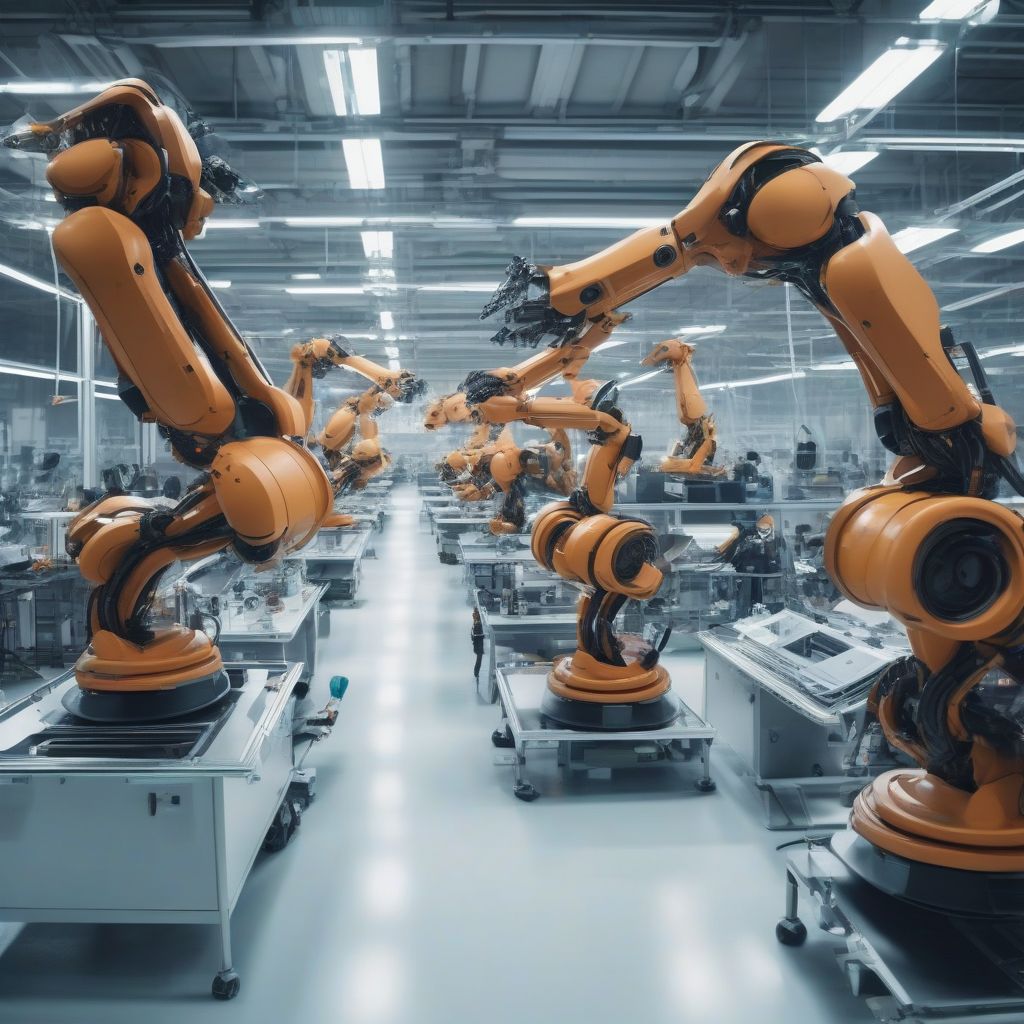Imagine a factory floor where robots work seamlessly alongside humans, performing intricate tasks with precision and speed. This isn’t science fiction; it’s the reality of Industry 4.0, where robotics is revolutionizing manufacturing and shaping the future of industries worldwide.
What is Industry 4.0, and How Do Robotics Fit In?
Industry 4.0, also known as the Fourth Industrial Revolution, represents the convergence of physical and digital systems through technologies like artificial intelligence, the Internet of Things (IoT), and, crucially, robotics. This new era emphasizes automation, interconnectivity, and data exchange, leading to smarter, more efficient, and adaptable manufacturing processes.
Robotics are at the forefront of this transformation. They act as the physical embodiment of automation, enabling tasks previously considered too complex, repetitive, or dangerous for humans to be performed with ease.
The Multifaceted Impact of Robotics
The influence of robotics on Industry 4.0 is far-reaching and multifaceted, encompassing various aspects of manufacturing:
1. Enhanced Productivity and Efficiency
Robots can work continuously without breaks or fatigue, significantly boosting production rates. Their precision minimizes errors and waste, further contributing to increased efficiency. This enhanced productivity translates into lower production costs and faster time-to-market for businesses.
2. Improved Workplace Safety
Robots are increasingly used in hazardous environments, protecting human workers from potentially dangerous tasks involving heavy machinery, chemicals, or extreme temperatures. This shift not only reduces workplace accidents but also frees human workers to focus on more cognitive and strategic tasks.
3. New Job Creation and Skill Requirements
While some fear robots will lead to job losses, Industry 4.0 is actually creating new employment opportunities. The demand for skilled technicians, engineers, and programmers to design, build, operate, and maintain robots is rapidly growing. This shift in the job market requires a focus on STEM education and upskilling programs to prepare the workforce for the future.
4. Customization and Flexibility
Robotics enables manufacturers to cater to the growing demand for personalized products and services. Automated systems can quickly adapt to produce small batches of customized goods with the same efficiency as mass production. This flexibility allows businesses to respond quickly to changing market trends and customer demands.
5. Supply Chain Resilience
Industry 4.0, powered by robotics, promotes supply chain resilience. Smart factories with interconnected systems can monitor production in real-time, optimize inventory management, and adapt to disruptions more effectively. This agility is crucial in today’s volatile global market.
Real-World Examples of Robotics in Action
The impact of robotics is evident across various sectors:
- Automotive Industry: Robots perform tasks like welding, painting, and assembly with high accuracy, accelerating production and improving vehicle quality.
- Electronics Manufacturing: Robots handle delicate components and perform intricate soldering, ensuring precision and consistency in electronic device assembly.
- Healthcare: Surgical robots assist surgeons with minimally invasive procedures, enhancing precision and reducing patient recovery times.
- Logistics: Robots automate warehouse operations, from picking and packing orders to transporting goods within facilities, streamlining logistics and distribution processes.
 Robots in a factory
Robots in a factory
[amazon bestseller=”robotics industry 4.0″]
Challenges and Opportunities in the Age of Robotics
While the benefits are undeniable, the widespread adoption of robotics also presents challenges:
- High Initial Investment: Implementing robotic systems can be costly, posing a barrier for smaller companies.
- Data Security Concerns: Increased connectivity raises concerns about data security and the need for robust cybersecurity measures.
- Ethical Considerations: The rise of artificial intelligence in robotics sparks ethical debates about job displacement, algorithm bias, and responsible automation.
Despite these challenges, the future of robotics in Industry 4.0 is bright. Advancements in collaborative robots (cobots) designed to work safely alongside humans, alongside developments in AI and machine learning, are paving the way for even more sophisticated applications.
Conclusion
The integration of robotics into Industry 4.0 is transforming the manufacturing landscape, ushering in an era of unprecedented productivity, efficiency, and flexibility. As technology continues to evolve, we can expect even more innovative applications of robotics, further blurring the lines between the physical and digital worlds. Embracing these advancements while addressing the associated challenges will be key to harnessing the full potential of robotics in shaping the future of industry.
What are your thoughts on the role of robotics in Industry 4.0? Share your views and let’s discuss the exciting possibilities this technological revolution holds.
